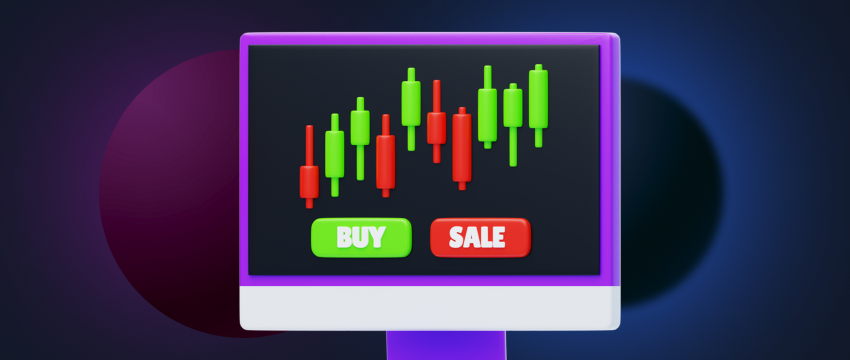Unlike day trading, swing forex trading is a longer-term approach. This is because a swing trader will hold onto positions for several days to a few weeks in an attempt to make gains on short- to medium-term price movements.
Swing traders face risks like overnight and weekend exposure because trades stay open beyond a single trading day. The risk lies in the fact that prices could gap and open in a subsequent session at considerably different prices. Swing traders make use of fundamental and technical analysis.

What makes swing trading so popular?
Swing trading is one of the most popular strategies adopted by traders, largely due to its flexibility. But flexible how you might be wondering.
Well, unlike day trading, which requires almost constant attention and hours of monitoring, swing trading is a little more balanced.
Swing traders don’t stay at their computers all day. They plan, execute positions, and monitor as needed.
This allows access for a wider audience, including those unable to trade full-time but still seeking active income opportunities.
Key resources for swing trading
Here are a combination of tools that swing traders use to come to investing decisions. Let’s discuss some of the most important:
- Technical analysis is a core component of swing investing. To predict future price movements and identify potential entry and exit points, swing traders will utilise charts, patterns, and technical indicators, e.g., Stochastic oscillator, candlesticks, volume, support and resistance, moving averages, Relative Strength Index (RSI), Moving Average Convergence Divergence (MACD),
- Swing traders use fundamental analysis as a secondary tool. It helps them understand events that may have an impact. Important fundamental factors include market sentiment, industry trends, economic data, news events, company earnings, and so forth.
- Trend analysis, which refers to identifying whether a market is trending or ranging. Swing traders generally favour trending markets, largely because price movements are easier to predict. This is not to say that they don’t operate in ranging markets; however, they do.
- Risk management is another crucial aspect of swing trading, as with most investment strategies. Swing traders must make use of risk management tools to protect their money, particularly because they hold positions for so long, exposing themselves to overnight risk and weekend gaps. Other ways that they strive to safeguard their funds is through portfolio diversification and position sizing.
Key reasons why someone opts to become a swing trader
There are several key reasons why someone would choose to become a swing investor:
- Swing trading is considered to be less stressful than other more fast-paced forms of investment. It doesn’t require constant attention, leaving more time for effective analysis for those that need it.
- Swing investing also accommodates a more flexible schedule, allowing traders who work full-time jobs to focus on trading when time permits.
- Swing investing is ideal for those who enjoy the complexities of technical analysis. It involves extensive use of tools and indicators. These help identify potential opportunities.
- Swing traders hold positions longer, making them less affected by short-term market noise and
- Swing trading can also be applied to a wide range of financial instruments, be it forex, commodities, metals, stocks, etc., facilitating portfolio diversification across asset classes.
Swing trading downsides
While the factors that make swing trading appealing are many, this form of trading does come with certain risks as well.
- While swing investing isn’t as stressful as day trading or scalping, holding positions for several days at a time can be emotionally challenging. This may lead to emotive forex trading, resulting in negative financial outcomes.
- Since swing trading sees positions being held overnight or over weekends, swing traders are exposed to the risk of adverse market movements when the market is closed. Gaps in price from one day to the next can result in considerable losses.
- While swing investing is a disciplined and methodical approach, there is still a risk of overtrading. Not every perceived opportunity is worth pursuing, so thorough analysis is essential to avoid entering too many trades or trading too frequently.
- Swing investing is also susceptible to the impact of unexpected economic releases, earnings reports, geopolitical tensions, etc. This may lead to price movements that don’t necessarily align with a swing trader’s intended plan or strategy.
- Swing investing also puts one’s trading psychology at risk, especially the pressure to deviate from a plan after losses, which leads to decision-making that lacks proper reasoning.
- Swing trading often relies on capitalising on breakouts or reversals, which are identified through technical analysis. However, false breakouts do occur, where the price seemingly breaks out of a pattern only to reverse shortly after, which may result in losing trades.

Commit to ongoing education
If you intend on becoming a swing investor, you’d best be prepared for it by learning everything you can about this particular strategy. Ongoing education is vital for any forex trading strategy, regardless of experience. There are many ways to gain knowledge.
Most reputable forex brokers offer an extensive range of resources to help their traders become better informed. These include:
- Blogs
- E-books
- Podcasts
- Seminars
- Webinars
- Videos
In addition to the more conventional resources listed above, signing up for a demo account is another very popular way of gaining practical trading experience.
A demo account offers a simulated environment, one that mimics real-life market conditions, for traders to practice entering and exiting positions. Traders can use a demo account to test various strategies, no matter how complex. They can adjust their plan as needed.
Traders also use virtual funds to execute these trades, thereby protecting their own capital. They can take as long as they need to gain the experience required to move to a live trading environment too.
Furthermore, traders can also make use of tools like Economic Calendars to track key economic events and indicators and trading calculators too. In this way, they diversify their skillset, becoming more knowledgeable as time passes.
Finally, traders can also engage with a global online community of traders with whom they can exchange ideas, concepts, tips, and strategies relating to swing trading.
This type of community also provides psychological support during moments when stress levels rise and traders require the guidance of others to not be overwhelmed by their emotions.

Trading with T4Trade
T4Trade is a popular global broker with clients worldwide. The forex broker offers top-tier, 24/5 multilingual customer support, cutting-edge trading platforms, and flexible investing conditions.
T4Trade is also a great go-to resource for traders looking to learn more about forex investing in a user-friendly way.
A variety of videos, podcasts, eBooks, webinars, and videos-on-demand are curated by in-house specialists, catering to all types of traders.
T4Trade traders can also choose from a wide range of trading instruments across 6 asset classes and enjoy flexible leverage, competitive spreads, fast trade execution, and seamless deposit and withdrawal options.
Traders can also choose from multiple trading accounts that best suit their needs and individual preferences.
Disclaimer: This material is for general informational and educational purposes only and should not be considered investment advice or an investment recommendation. T4Trade is not responsible for any data provided by third parties referenced or hyperlinked in this communication.




